Raphael created exquisite tapestries for the Sistine Chapel but unless you are in Rome this weekend, the chances of seeing them reunited where they original hung is practically nil.
That is because a one-week exhibition of Raphael’s 12 surviving tapestries ends this Sunday, February 23. It is only the third time in the past 50 years they have been reunited in the Sistine Chapel. The enormous tapestries left their usual home in the Vatican Museums to return to the chapel to mark the anniversary of the Renaissance artist’s death.
“We wanted for the celebration of 500 years of Raphael’s death to give the opportunity to share the beauty that is represented by the tapestries together in this beautiful, universal place that is the Sistine Chapel,” the director of the Vatican Museums, Barbara Jatta, said in a statement. She described it as an “important moment.”
Thomas Campbell, the director of the Fine Arts Museums of San Francisco, who is a tapestry expert, was in the chapel on Tuesday morning to see them unveiled. “You just wanted to woop and sing,” he wrote on Instagram, resisting the temptation to do either because of the chapel’s rule of silence.
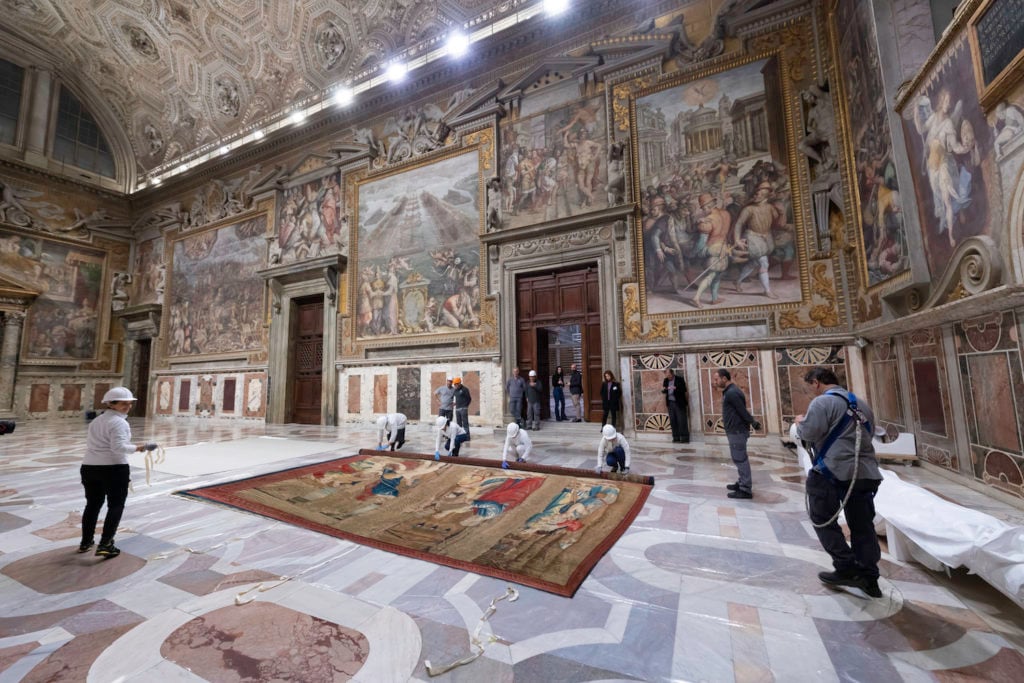
Installation of Raphael’s tapestries at the Sistine Chapel. Photo courtesy of the Vatican Museums.
While it is rare for the tapestries to return to the Sistine Chapel at all, it is just as unusual to see them side by side as they are typically on rotating display at the Vatican Museums protected by glass. Now, hanging once again on their original 16th-century hooks, visitors can admire the tapestries alongside frescoes and paintings by Botticelli, Perugino, Ghirlandaio and Signorelli, and, of course, Michelangelo. (The older artist was not a fan of his younger rival, Raphael.)
Pope Leo X commissioned Raphael to create 16 tapestries in 1514 but several have been lost over time. They were completed for St. Stephen’s Feast Day, December 26, in 1519. It is possible that Raphael did not get to see the works installed as he died six months later on April 6, 1520, aged 37.
The tapestries were woven in the workshop of Pieter van Aelst in Brussels, which worked with Raphael’s painted designs, known as cartoons. Each tapestry is made of silk and wool thread, and weighs between 110 to 130 pounds. They measure about 35 square yards. They cost five times Michelangelo’s ceiling because of the cost of gold thread and the labor required to weave them. Seven of the original cartoons are in the Victoria and Albert Museum in London, hence the presence at the unveiling of its director, Tristram Hunt.
The tapestries have survived many close calls, ranging from the being stolen in the Sack of Rome in 1527, and seized by Napoleon in 1798.
See the some of Raphael’s exquisite “Acts of the Apostles” tapestries below.
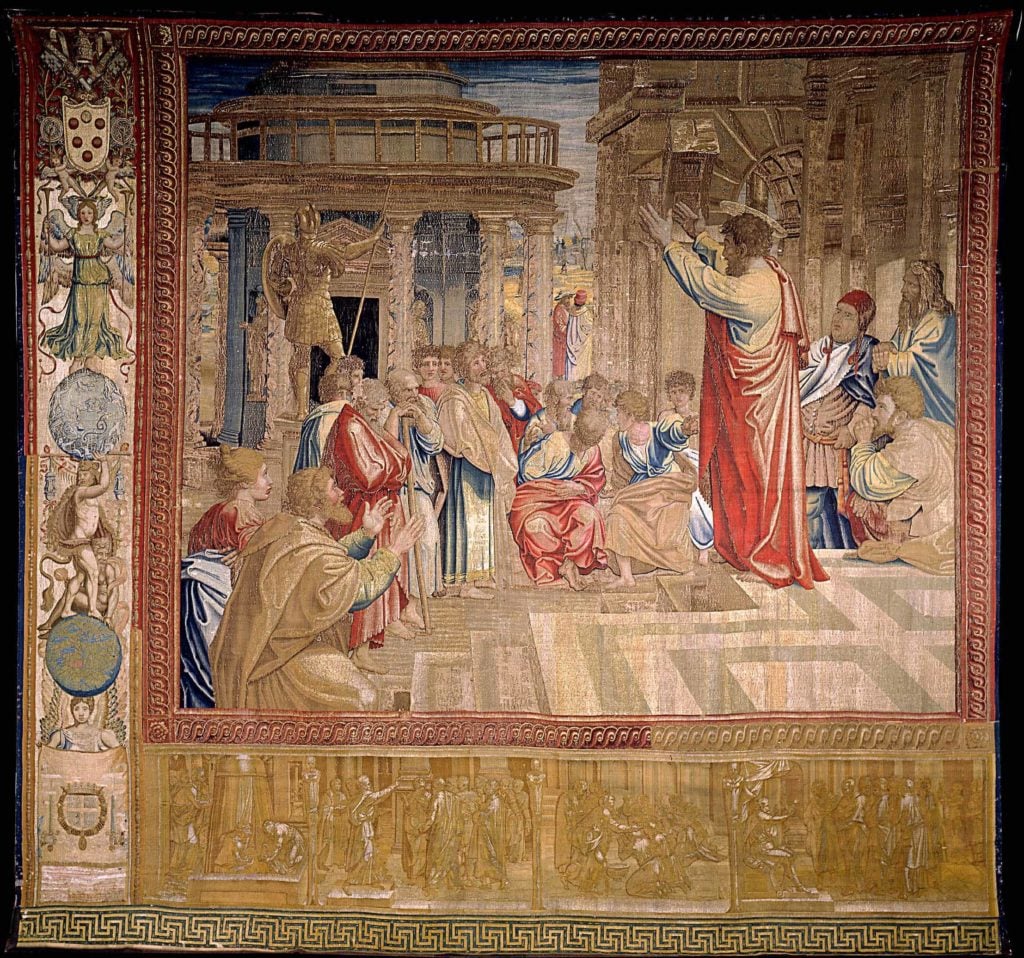
Raphael, . Photo courtesy of the Vatican Museums.
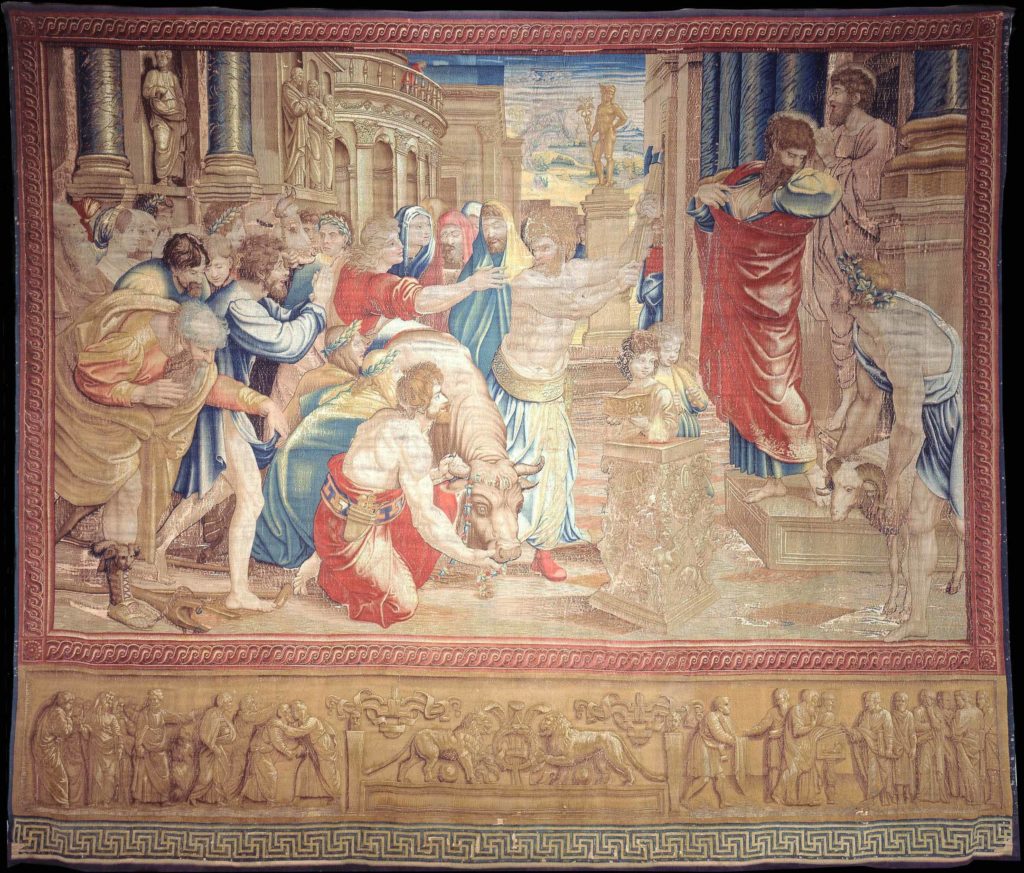
Raphael, . Photo courtesy of the Vatican Museums.
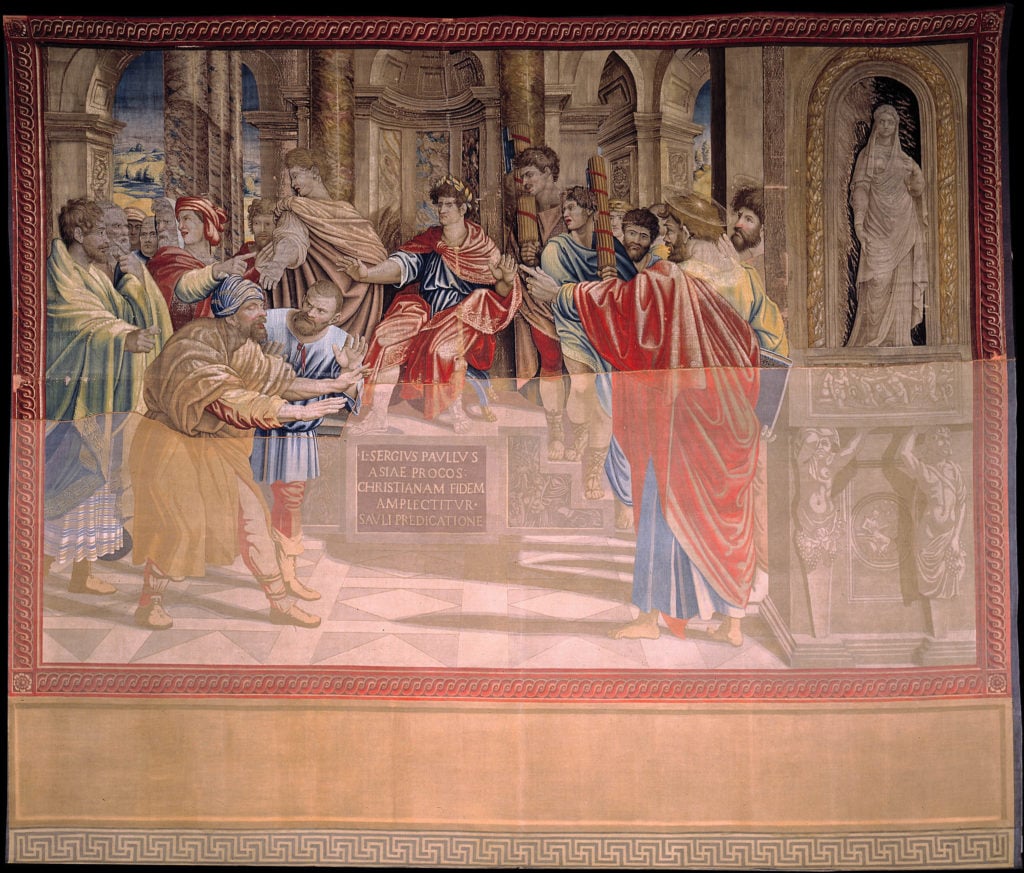
Raphael, . Photo courtesy of the Vatican Museums.
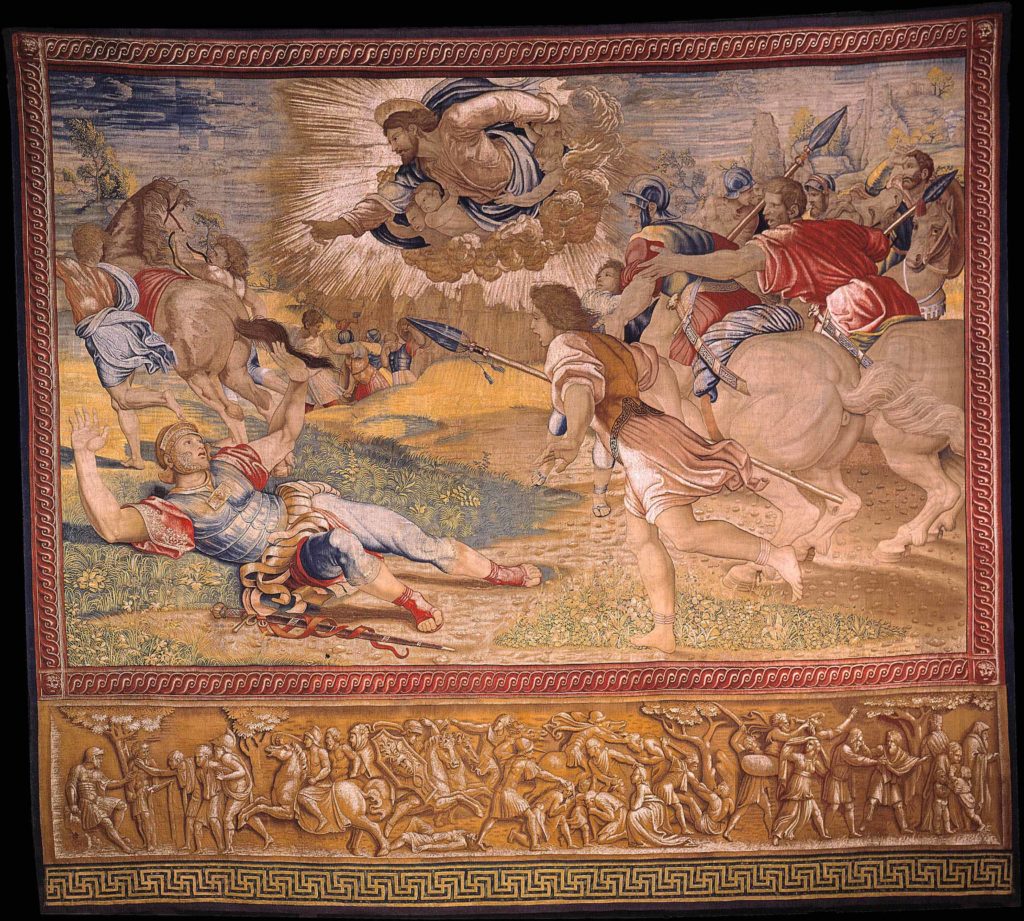
Raphael, . Photo courtesy of the Vatican Museums.
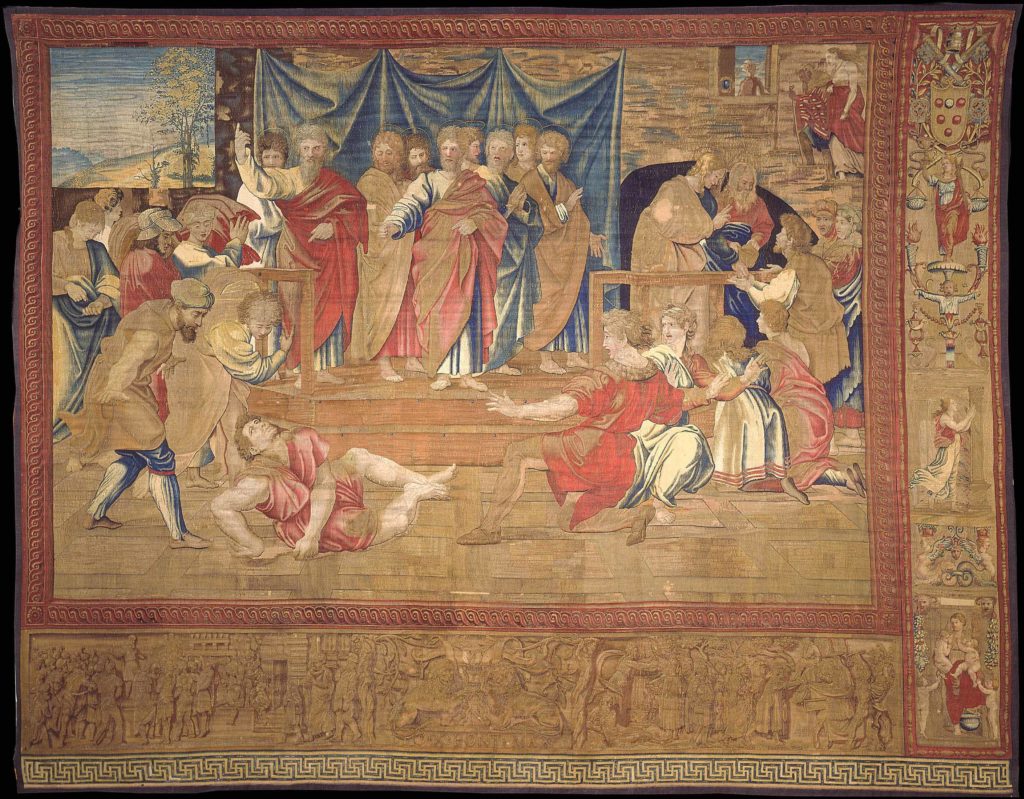
Raphael, . Photo courtesy of the Vatican Museums.
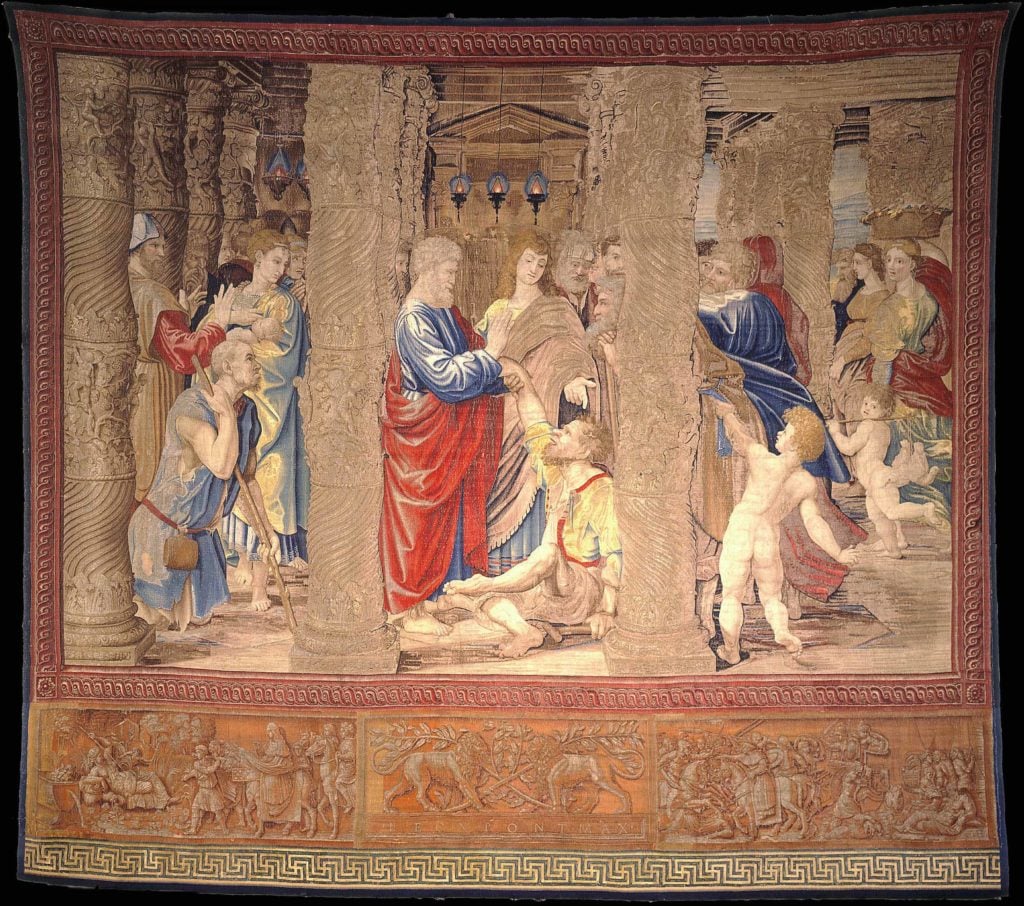
Raphael, . Photo courtesy of the Vatican Museums.
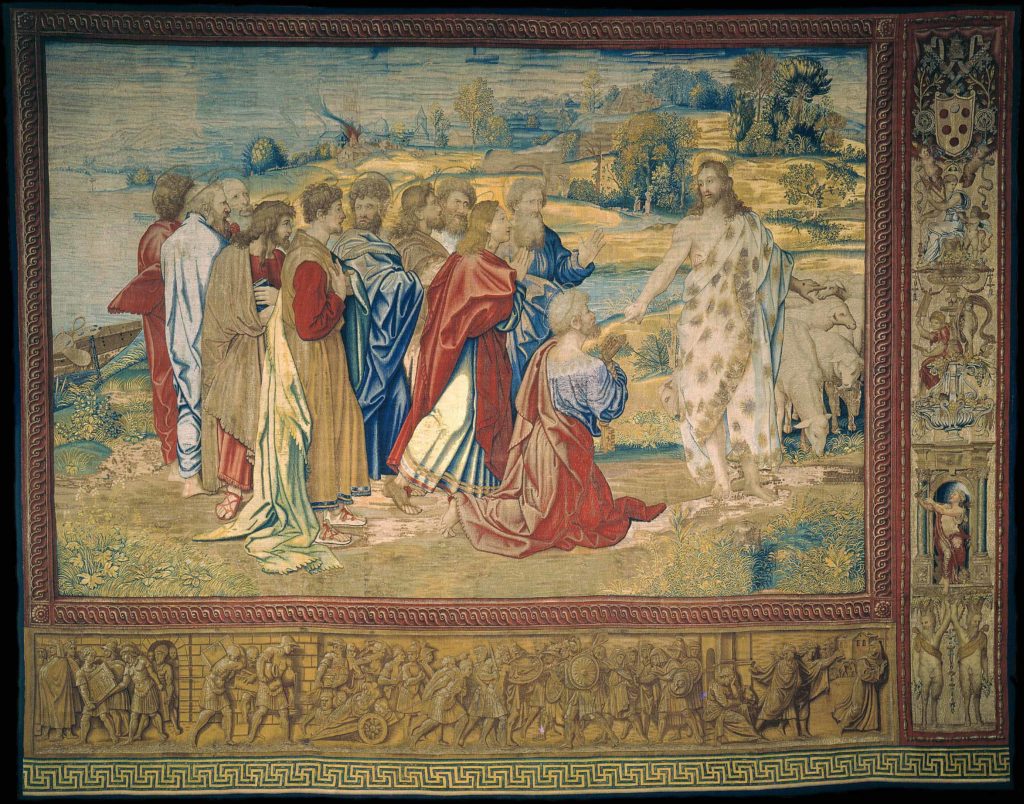
Raphael, . Photo courtesy of the Vatican Museums.
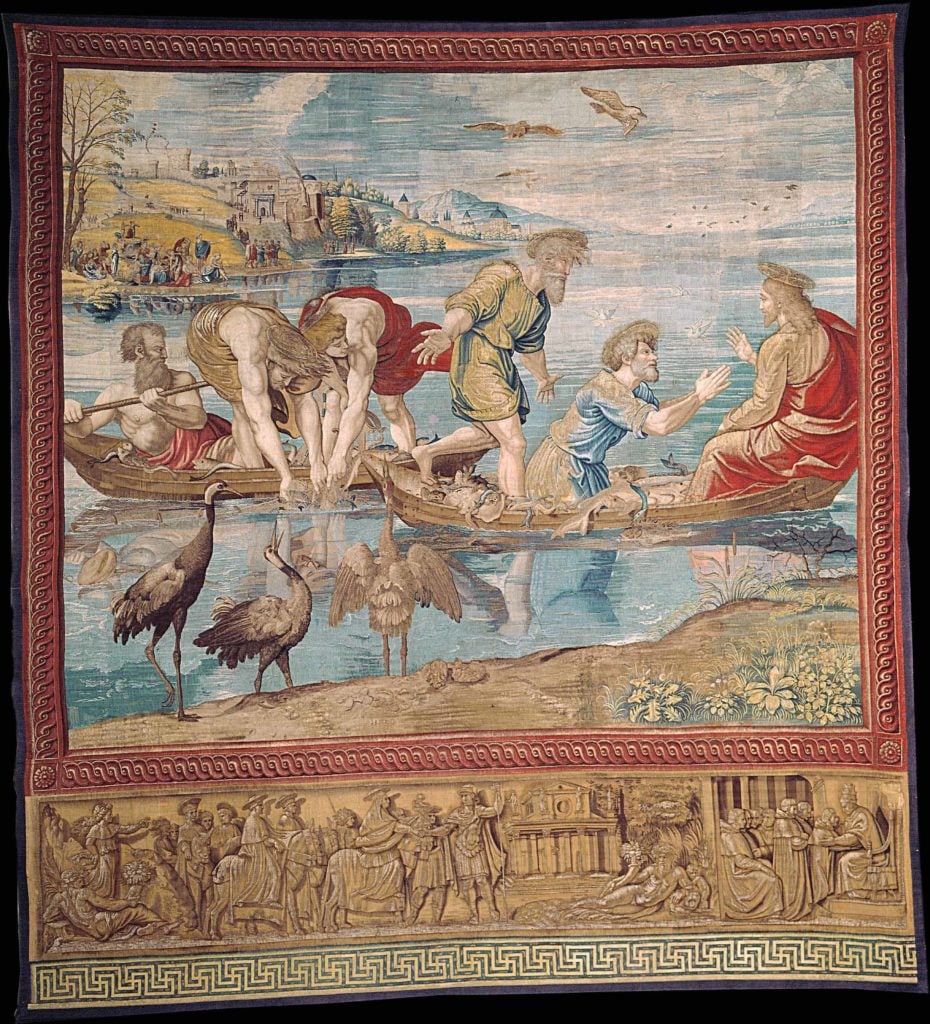
Raphael, . Photo courtesy of the Vatican Museums.
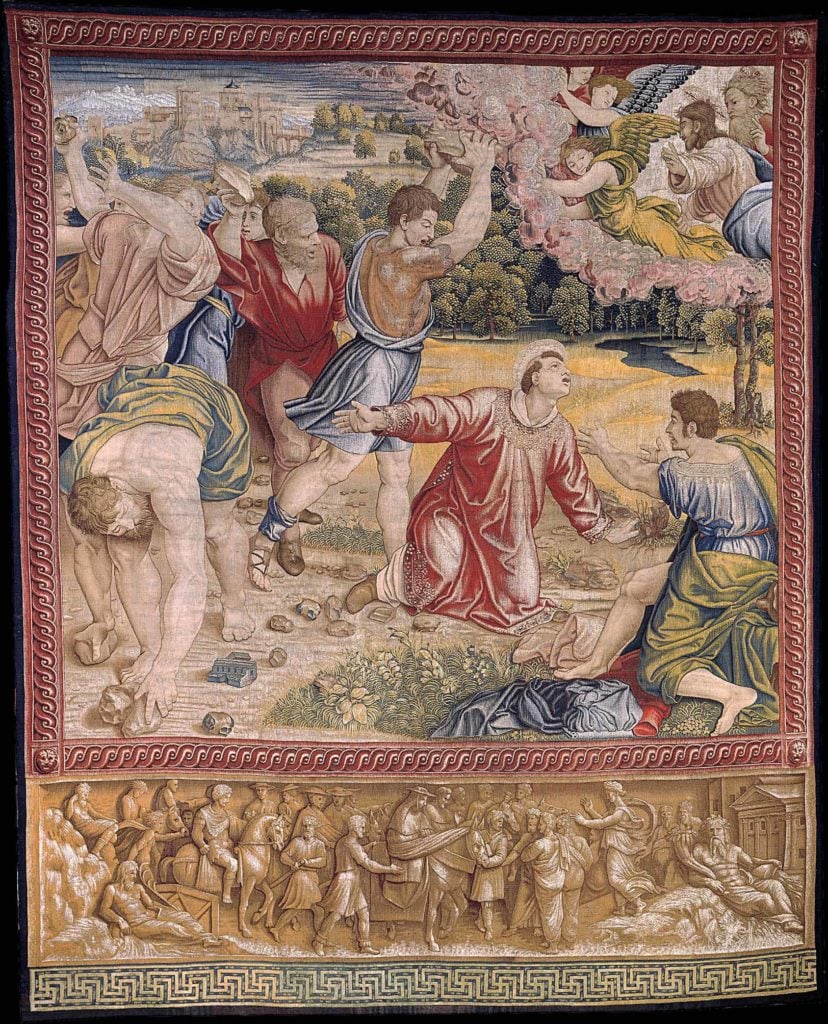
Raphael, . Photo courtesy of the Vatican Museums.
Source: Exhibition - news.artnet.com



